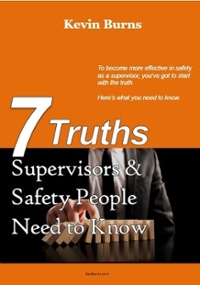If you want to change safety performance, you have to change the approach and the conversation.
In safety, there are no trade secrets. The same set of rules apply to every company within an industry. Construction safety applies to all builders. Mining safety is the same for every mine. Electrical safety is the same for every electrician. Whatever your industry, your competitors don’t get a leg up because they have different rules to play by. Everyone has the same rules and the same code.
So, why do some companies find safety so easy to do and get their people to get on-board with safety? And other companies in the same industry struggle to meet the bare minimum? Why do they have to continually chase their people into compliance?
Well, it’s not the rules. The rules are the same.
What makes one company outperform another in safety is the approach they take to safety? While some companies, or at least some of their people, view safety as restrictive, other workplaces rally their people around safety as a way to protect and value their good people.
Here are 5 parts that play a role in getting employees on-board with safety:
- Management style – enforcement/authoritarian style will have less success than a coaching/mentoring style.
- People-view – how you view people is exactly how you will treat them. If you believe employees can’t be trusted, you won’t. And they won’t either.
- Level of caring – you cannot fake caring about employees. Either you do, or you don’t. The employees will figure out where you stand soon enough.
- Supervisory skills – supervisors who lack good skills will usually default to enforcement and authority. As they gain new skills, they will earn more trust and respect from their crews.
- Engagement – rules and processes heaped onto people who aren’t engaged and who aren’t paying attention is never going to work. To get safety improvement, you first need engagement.
All five items above play a role in how a company approaches safety.
The observation to pay attention to is if other workplaces are doing safety well, and you're not, it's not because of something you're missing in the safety legislation. It's either how you're managing the safety program, or it's the approach you're taking to safety.
If all you’re preaching is rules and regulation, you are going to lose their attention. And if you don’t have their attention, you don’t have their engagement in safety.
Championship teams aren't focused on rules.
In sports, when coaches want to find ways to get through to their players, they switch up their approach. They find new ways and new examples to connect with their people. Unlike safety, sports teams don’t spend the biggest portion of time reviewing rules. They work on developing and improving the performance of their players within the rules.
If you want to change safety performance, you have to change the approach and the conversation. You have to find a new way to get your people to understand that safety is more than just the law, it’s how we look out for and care for each other.
 If you’re struggling to get your people to pay attention to safety, more of the same isn’t going to get you there. You need to change --
If you’re struggling to get your people to pay attention to safety, more of the same isn’t going to get you there. You need to change --
Learn more strategies to improve safety. Put Kevin Burns' expertise to work in your organization. Whether it's for a one-day safety event or training/facilitation session, or perhaps Kevin's 90-Day Safety Accelerator program and the One-Year Safety Culture Shift program. There is a program that can work for you, your front-line crews, your management team, your safety committee and your supervisors.
Kevin Burns is a management consultant, speaker/facilitator and author of "PeopleWork: The Human Touch in Workplace Safety." He is an expert in how to engage people in safety and believes that the best place to work is always the safest place to work.
Get details and more information http://www.kevburns.com/contact


